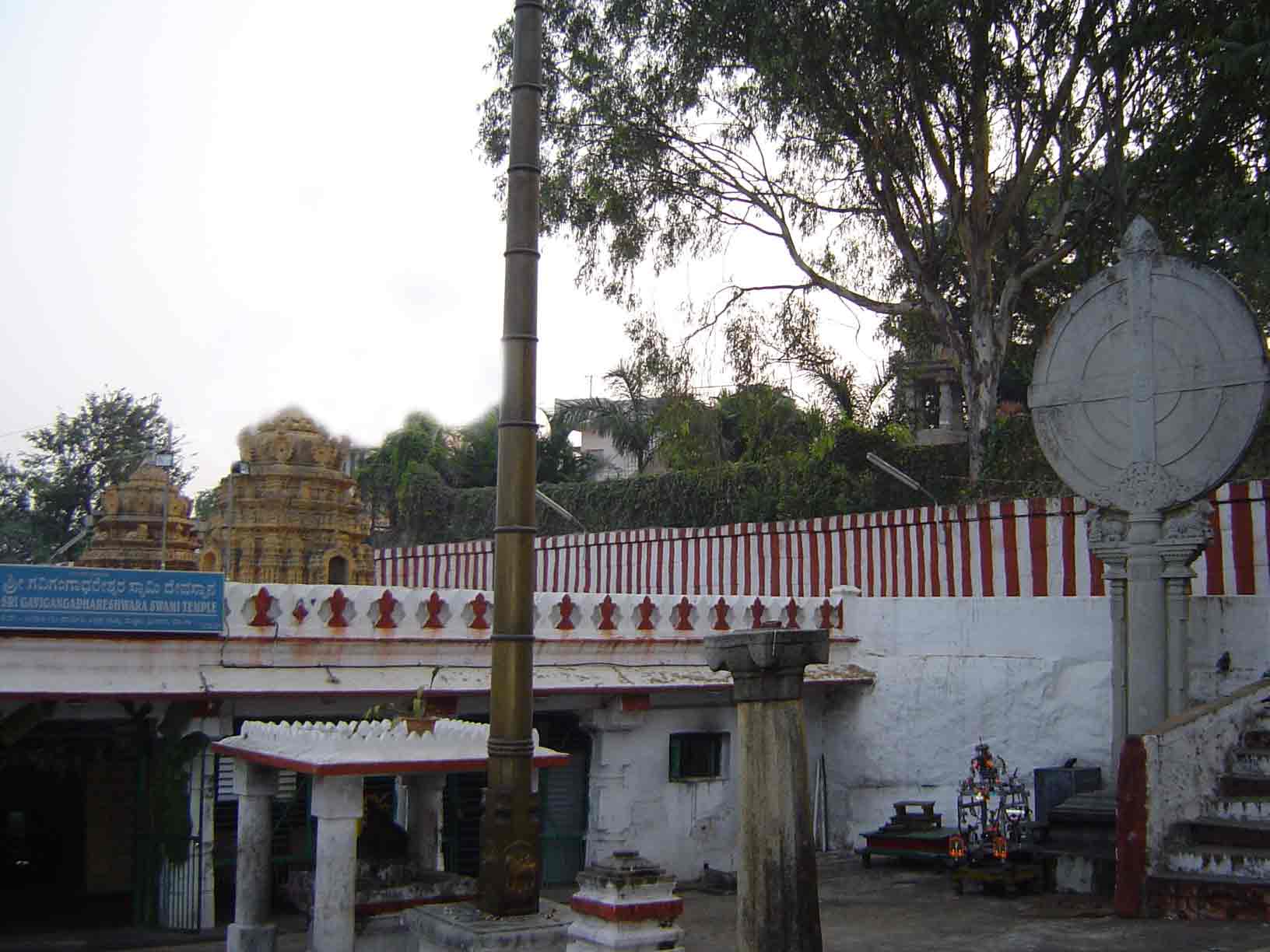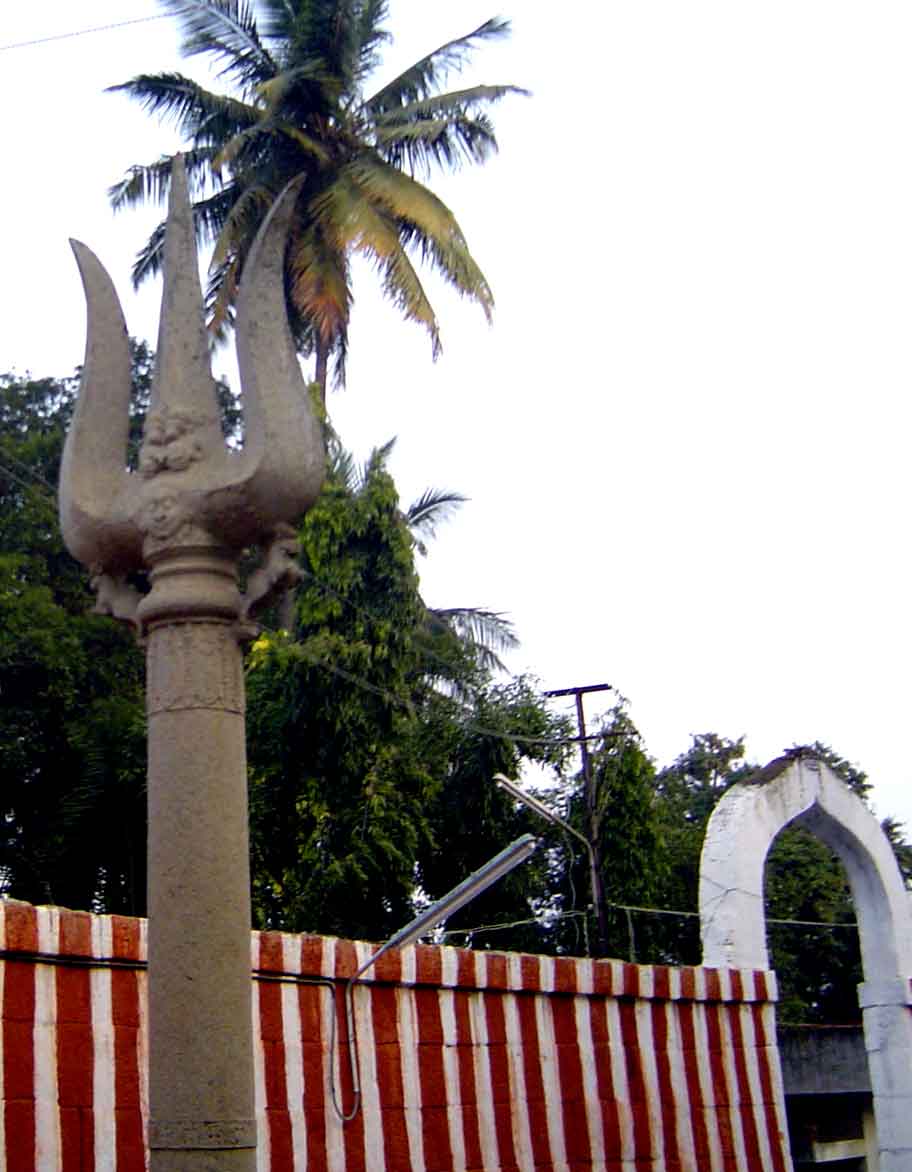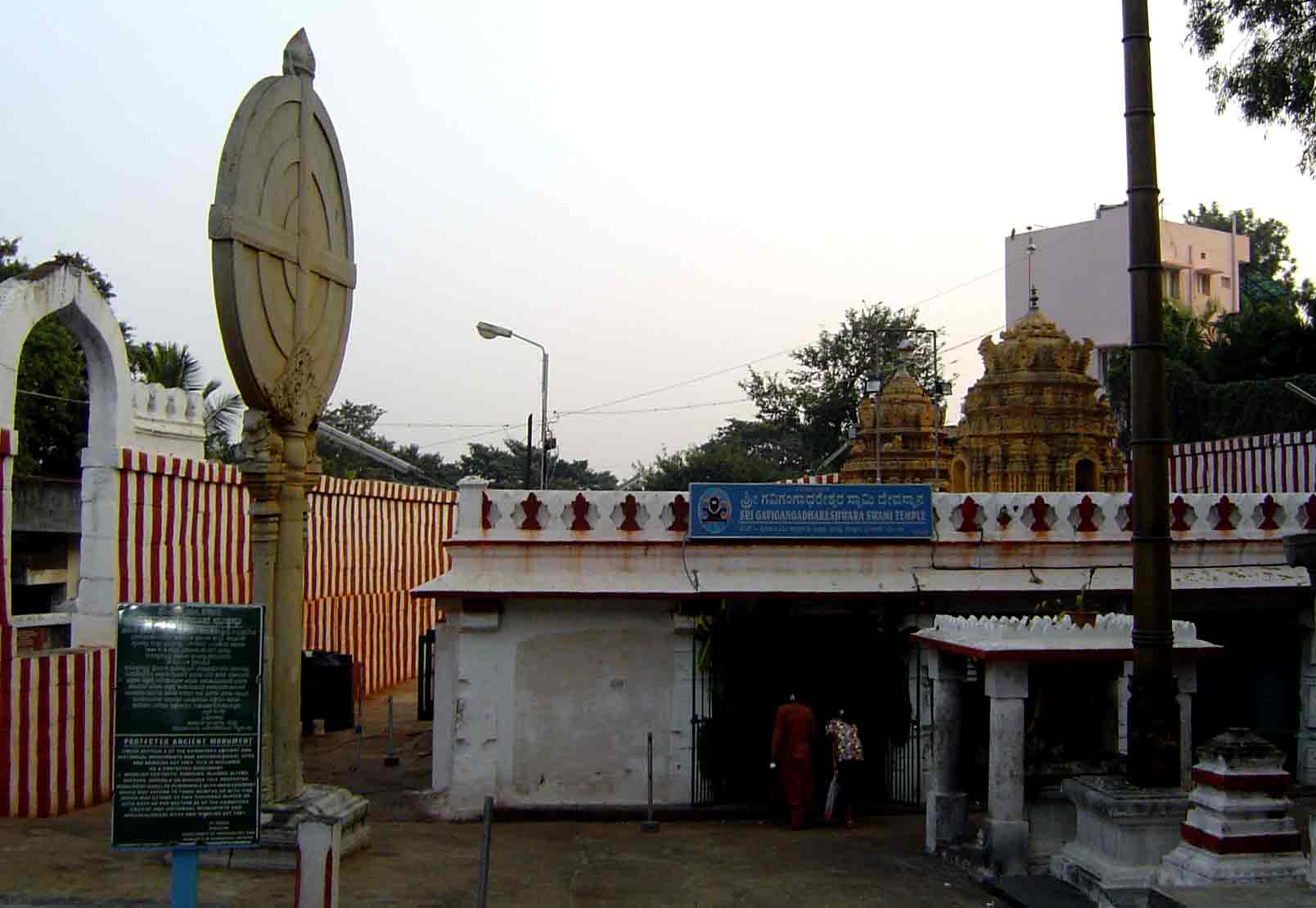
|
|
|---|---|
| Agni murti and the Gangadhareswara Cave Temple | |
New Year's Yagya
|
|
The use of yagyas to enhance life and remove obstacles is closely tied to the study of Jyotish as a diagnostic tool to see what areas of life need strengthening. All of Jyotish is based on beginnings. If you ensure a strong beginning, then the unfoldment of events will be strong, successful, and fulfilling. We made arrangements to have a very special and rare yagya performed on New Year's Day, 2005 to make the best possible start to the New Year. On that day, Seetharam supervised the performance of a special yagya at the temple seen in the images above. This yagya will honor Shiva, Parvati, Ganesha, and especially Agni (the god of the yagya fire). | |
The temple is called Gangadhareswara and is built around a very very old cave temple to Lord Shiva where the lingam shown above is found. This temple was most likely carved out of the rock hillside around the year 900 and has been in use ever since. As you can see from the photos Mangalore has grown up around the temple area. The temple has many unique features which include a special shakti Ganapati; a powerful form of Ganesha where he has 12 arms and hands instead of the usual 2 or 4. Additionally, the temple contains what is most likely the only temple of Agni in all of South India. Because we organize 15 days of fire yagyas each month (over 180 days each year), it is fitting to do a yagya for Agni, the yagya fire, so that he will empower and bless our yagyas during the coming year. There is one other feature of this temple worthy of note; Every year on 14th/15th of January (the day the Sun begins to move northwards;a sort of celestial spring) a ray of sunlight passes precisely through the horns of the stone bull (Nandi) outside the temple and falls exactly on the Shiva Lingam inside the temple. Because the temple priest was so pleased with our yagya, Seetharam was invited to be the one to come and chant Radram, the main vedic hymn for Shiva on that day this year. | |
Photos from the yagya | |

| The temple is over 1,100 years old. In the main courtyard, you can see two round discs; one for the Sun and one for the Moon. The is also a large trisul (Shiva's trident) which you see in the lower left photo. The entrance to the temple is in the middle of the photo below. |

| 
|
| The temple interior slopes downward and the entrance to the main sanctum where the Shiva lingam is found is straight ahead. You can see rough hewn wooden doors beyond the ancient stone pillars and the backs of people standing to watch the puja. This temple is a cave temple beneath the surface of the ground and the interior is quite small. For a closer look, just click on the image above and it will open full sized. | |
| Traditionally in South India the temple murtis are carved from a greenish granite which turns a deep black color when rubbed with sesame oil. In the image on the upper left, you can see the 2 faces of Agni. In the lower image his multiple arms are visible and in the full length image you can see all the detail of this ancient carving. Also notice the rock ceiling of the cave. Be sure to click on each image to see all the detail. This is the only Agni murti in South India and one a very few in the whole country. | |
| The yagya was a traditional abishekam where liquid offerings of water, milk, coconut juice, turmeric and sandalpaste were poured over the deity. Then the murti was dried and a new green silk dhoti was wrapped around it and fresh flower malas were offered. Click on the image for a closer look. | |